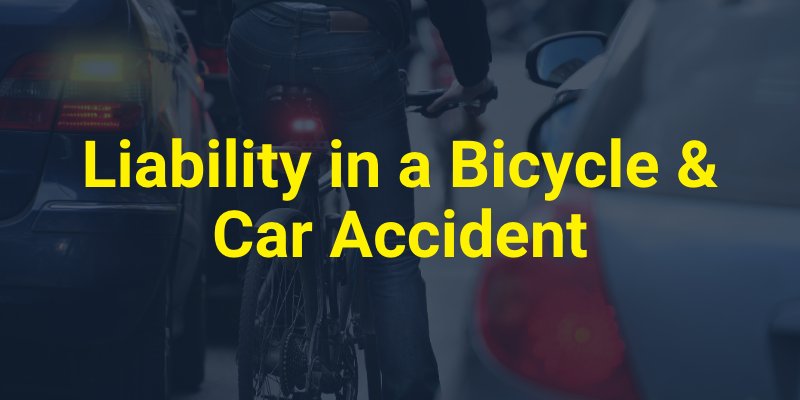Collisions between motor vehicles and bicycles can occur, leading to severe physical injuries or even fatalities. Establishing fault in these incidents becomes a critical process as it determines who is legally responsible for any damages resulting from the accident. Our Phoenix personal injury lawyers can help you navigate your claim.

Liability in an accident involving a bicycle and a car isn’t always straightforward, but here are the parties that may hold responsibility in this type of accident:
If a cyclist ignores traffic laws, such as running a red light or biking on the wrong side of the road, they could be deemed liable for the accident, including their own injuries.
If the driver of the vehicle involved causes the accident due to reckless or negligent driving – like speeding, texting and driving, or driving under the influence – it’s likely that they will be held liable for any resulting damages.
An accident can occur even if the at-fault vehicle does not come into direct contact with the bike. Should another driver’s actions force a cyclist to swerve, causing the cyclist to be involved in a collision with another car or an object, that driver might hold liability for the incident.
If negligent maintenance or poor design of roadways somehow contributed to an accident (like faulty traffic signals or severe potholes in the road), local government bodies could be deemed legally responsible.
If there is a defect or problem with the car, bike, or any of their parts, and it contributed to the accident, then the manufacturer of this vehicle/part could be held liable.
If an individual is driving as part of their employment and causes an accident due to negligence, their employer may also bear liability.
Ultimately, determining who is liable can be a challenging process that is best left to legal professionals.
In Arizona, the law employs what’s known as pure comparative negligence for personal injury claims. This basically means that even if you, as an injured party in an accident involving a bicycle and car, are found to be partially at fault (even up to 99%), you may still recover damages. However, any compensation received would be adjusted based on your level of responsibility for the accident.
“The defense of contributory negligence or of assumption of risk is in all cases a question of fact and shall at all times be left to the jury. If the jury applies either defense, the claimant’s action is not barred, but the full damages shall be reduced in proportion to the relative degree of the claimant’s fault which is a proximate cause of the injury or death, if any.”
So, if it’s determined that you were 20% at fault for the accident and your damages amounted to $100,000, this system allows for your recovery to be reduced by your degree fault—in this case, 20%. Therefore, you would be able to receive a maximum of $80,000.
Determining who is at fault and building an effective claim for compensation takes experience and dedication from a legal professional. If you need help after an accident involving a bicycle and a car, don’t hesitate to contact us today to schedule a free consultation.